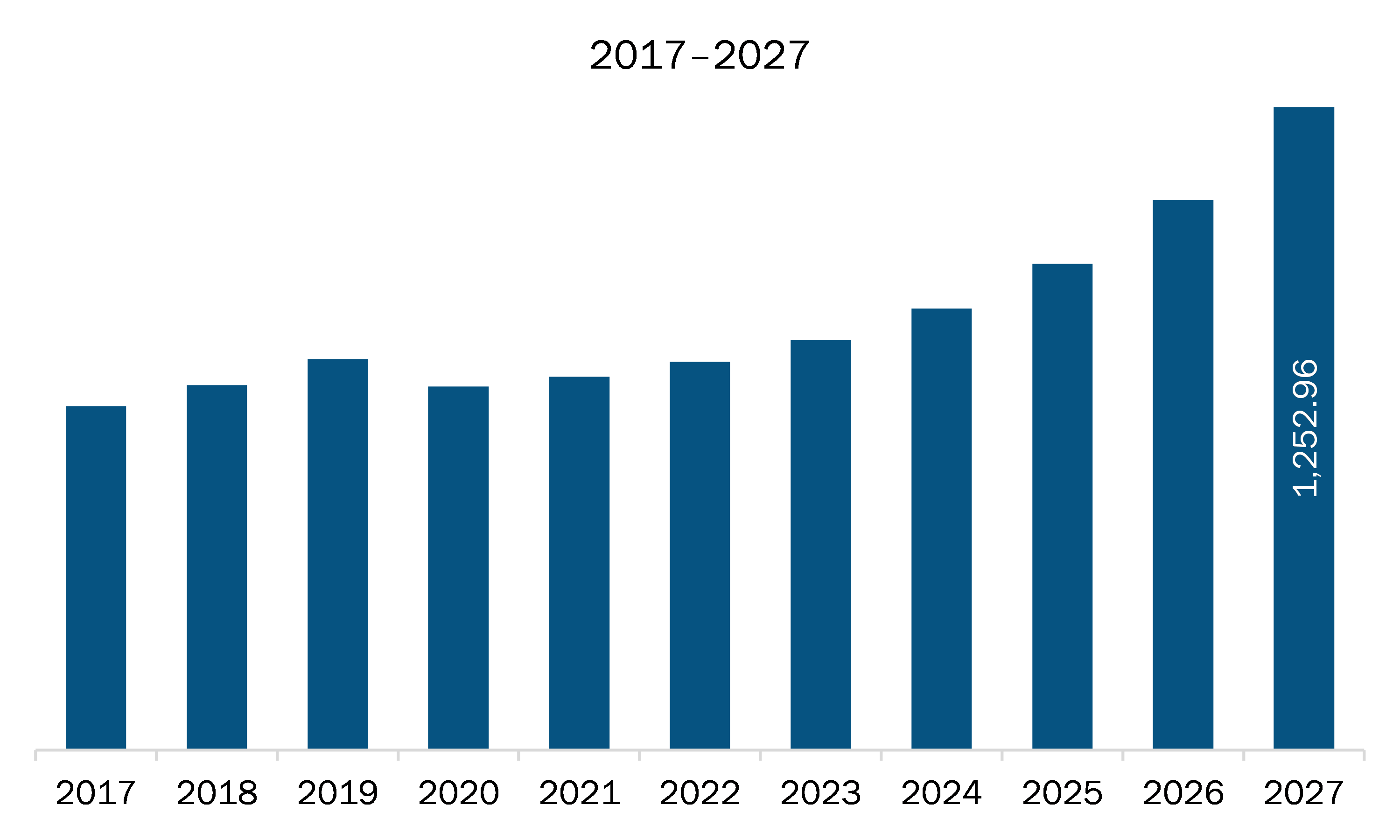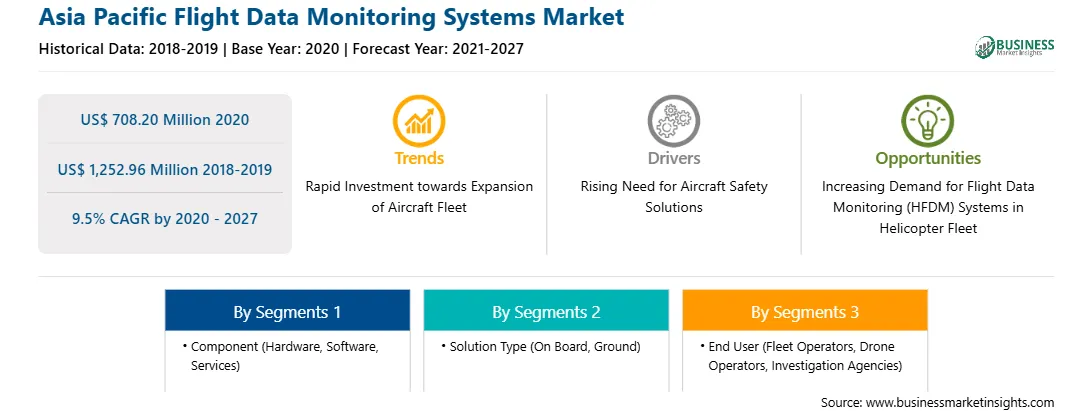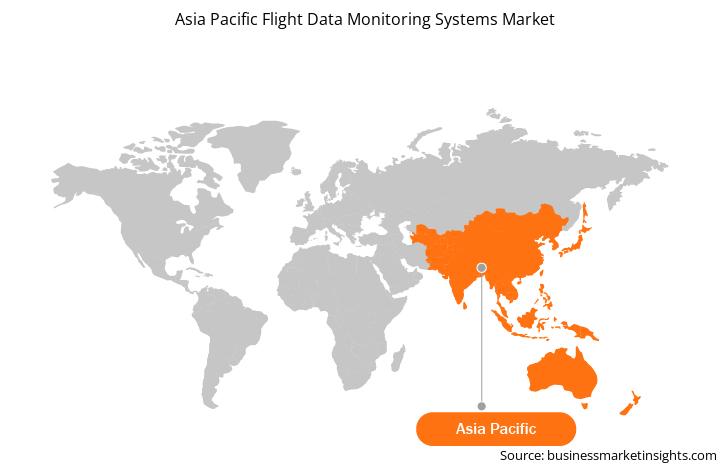In APAC, China, India, and Japan are among the major countries with significant aircraft fleet. According to the IATA, the region witnessed a growth of 8.7% in passenger traffic for airways transportation in 2018 compared to that in 2017. This rise in passenger traffic generates a significant demand for commercial aircraft fleets to be operational. Accelerating economic growth and increasing incomes across the region are driving the business travel. As per the World Economic Forum, airlines in the region account for over a third of global passenger numbers, and market share is also set to grow. China is leading the region’s air travel industry and it is set to overtake the US as the largest aviation market by 2030, as stated by IATA. As per Boeing's Current Market Outlook, the region is expected to receive ~17,390 aircraft deliveries by 2038. Thus, growing number of aircraft deliveries and rising aviation industry in APAC would propel the demand for flight data monitoring systems in the coming years. Singapore Airlines, Air China, Air India, Japan Airlines, and Korean Air are among major airlines operating in the region. Singapore Airlines operates a safety program, which helps raise awareness about safety practices on the ground, mitigate ramp accidents, and measure safety performance standards for continual improvement. The airlines also operate Flight Data Analysis Program (FDAP), where flight data is captured in quick access recorders in aircraft. The recorder data is used by engineering maintenance staff and flight crew to support safe operations. Thus, due to the growing concern of safety of aircraft, airlines are highly procuring flight data monitoring systems. Rising manufacturing of aircraft is also likely to boost the demand for flight data monitoring systems in the region.
The COVID-19 outbreak has adversely affected several countries in APAC such as South Korea, and India. A few countries such as China, India, South Korea, and Japan are increasingly moving toward the advancement of the commercial and defense aircraft industry. Further, countries such as China and Japan increased their aircraft fleet owing to rising domestic and international flights. These countries is upgrading their flight data monitoring systems operations by adopting new systems and services for aircraft. The governments of various countries also supported the smaller local air carriers to mitigate the outbreak of COVID-19, which helped market to sustain the growth. For instance, the government of South Korea announced the financial support of up to US$ 269 million for smaller local air carriers. In addition, the government also provided the US$ 2.7 billion support to Asiana Airlines and Korean Air to stabilize the liquidity of both airlines. Thus COVID-19 is having adverse impact on APAC region for the flight data monitoring systems market.

Strategic insights for the Asia Pacific Flight Data Monitoring Systems provides data-driven analysis of the industry landscape, including current trends, key players, and regional nuances. These insights offer actionable recommendations, enabling readers to differentiate themselves from competitors by identifying untapped segments or developing unique value propositions. Leveraging data analytics, these insights help industry players anticipate the market shifts, whether investors, manufacturers, or other stakeholders. A future-oriented perspective is essential, helping stakeholders anticipate market shifts and position themselves for long-term success in this dynamic region. Ultimately, effective strategic insights empower readers to make informed decisions that drive profitability and achieve their business objectives within the market.

| Report Attribute | Details |
|---|---|
| Market size in 2020 | US$ 708.20 Million |
| Market Size by 2027 | US$ 1,252.96 Million |
| CAGR (2020 - 2027) | 9.5% |
| Historical Data | 2018-2019 |
| Forecast period | 2021-2027 |
| Segments Covered |
By Component
|
| Regions and Countries Covered | Asia-Pacific
|
| Market leaders and key company profiles |
|
The geographic scope of the Asia Pacific Flight Data Monitoring Systems refers to the specific areas in which a business operates and competes. Understanding local distinctions, such as diverse consumer preferences (e.g., demand for specific plug types or battery backup durations), varying economic conditions, and regulatory environments, is crucial for tailoring strategies to specific markets. Businesses can expand their reach by identifying underserved areas or adapting their offerings to meet local demands. A clear market focus allows for more effective resource allocation, targeted marketing campaigns, and better positioning against local competitors, ultimately driving growth in those targeted areas.

The flight data monitoring systems market in APAC is expected to grow from US$ 708.20 million in 2020 to US$ 1,252.96 million by 2027; it is estimated to grow at a CAGR of 9.5% from 2020 to 2027. The demand for FDM is supposed to escalate during the forecast period with rising importance for data analytics in the aviation industry. For instance, in October 2020, Uber Elevate, an urban air mobility project of Uber Air, selected GE Aviation to develop a flight data monitoring program for eVTOL (electric vertical takeoff and landing) ridesharing service. The service is expected to be launched in 2023 but the voluntary deployment of FDM in the eVTOL highlights the importance of flight safety and data solutions. The flight data monitoring system is transforming airlines from reactive mode to proactive mode, thereby augmenting the market growth.
The APAC flight data monitoring systems market is segmented based on component, solution type, end user. Based on component, the APAC market is segmented into hardware, software, and service. Hardware segment held the largest market share in 2020. Based on solution type, the APAC market is segmented into on-board and ground. On board segment held the largest market share in 2020. In terms of end user, the market is segmented into fleet operators, drone operators, and investigation agencies. Fleet operators segment held the largest market share in 2020.
A few major primary and secondary sources referred to for preparing this report on the flight data monitoring systems market in APAC are company websites, annual reports, financial reports, national government documents, and statistical database, among others. Major companies listed in the report are Curtiss-Wright Corporation; FLYHT Aerospace Solutions Ltd.; Honeywell International Inc.; L3Harris Technologies Inc.; Safran Electronics & Defense; and Teledyne Controls LLC.
The Asia Pacific Flight Data Monitoring Systems Market is valued at US$ 708.20 Million in 2020, it is projected to reach US$ 1,252.96 Million by 2027.
As per our report Asia Pacific Flight Data Monitoring Systems Market, the market size is valued at US$ 708.20 Million in 2020, projecting it to reach US$ 1,252.96 Million by 2027. This translates to a CAGR of approximately 9.5% during the forecast period.
The Asia Pacific Flight Data Monitoring Systems Market report typically cover these key segments-
The historic period, base year, and forecast period can vary slightly depending on the specific market research report. However, for the Asia Pacific Flight Data Monitoring Systems Market report:
The Asia Pacific Flight Data Monitoring Systems Market is populated by several key players, each contributing to its growth and innovation. Some of the major players include:
The Asia Pacific Flight Data Monitoring Systems Market report is valuable for diverse stakeholders, including:
Essentially, anyone involved in or considering involvement in the Asia Pacific Flight Data Monitoring Systems Market value chain can benefit from the information contained in a comprehensive market report.